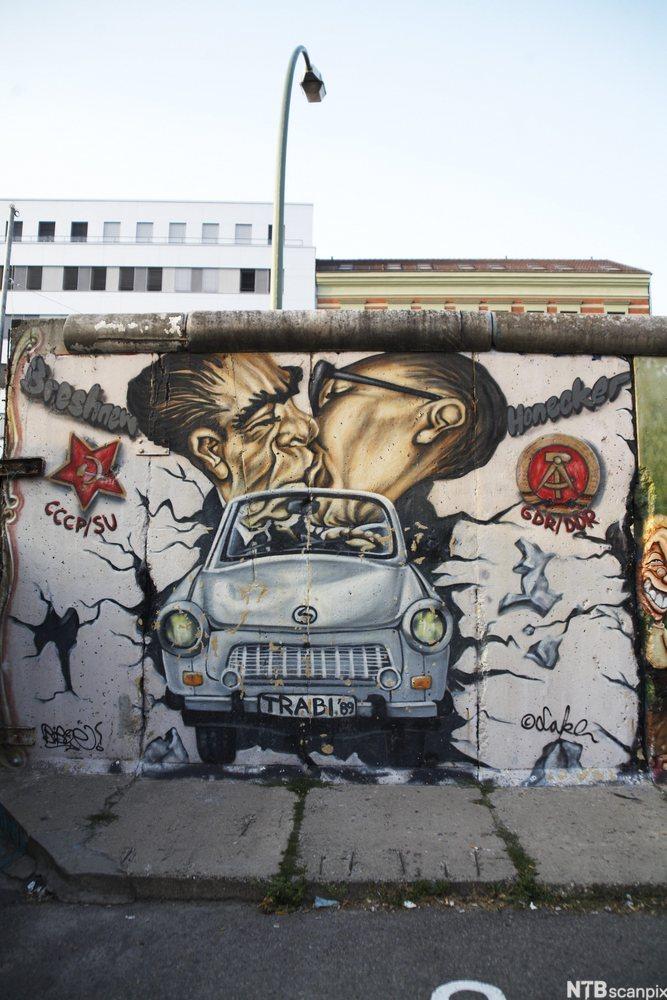
In times of conflict or occupation, the free press will usually be censored by those in power. They want to filter the information to the people to protect their own interests. Then people must find other channels to express their opposition to the system, and one way to do so is simply to write it on a wall for everyone to see. But also in a democratic society with freedom of speech, there are groups that do the same to set focus on a certain issue and reach a large audience.
Bold but Risky

Political graffiti has become a mouthpiece for opponents all over the world who want to express their disapproval of either the political situation or to promote any other just cause. This way of stating an opinion is certain to draw the attention of the public; the snappy and explicit statement or flashy illustration meets the eyes of the passers-by and makes them reflect for a moment. The point of political graffiti may not primarily be to convince people; it is more a way to give vent to an opinion and to provoke people to take a stand. A famous example of political street art is the picture of Soviet President Leonid Brezhnev and East German leader Eric Honecker kissing, which was painted on the Berlin Wall during the period before Germany was reunited.
But this way of communicating a political position may, in certain situations, be quite risky. During WWI, anyone writing negative things about Hitler and the Nazis on the wall would most certainly be arrested and treated as an enemy of the Reich. In the same way, the authorities in totalitarian regimes today will react with reprisals to this kind of unwanted political activity.
An Open Channel

The political slogans written on a wall will, in many cases, be a cry for freedom and independence. For example, on the Canary Island of Tenerife, someone has painted “Free Tenerife” in bold white letters on a grey brick wall, reminding tourists that the island belongs to Spain and that there are activists who want to claim the independence of the island. Freedom is certainly a cause well worth fighting for; but the wall may also give room for more questionable attitudes. In the suburbs of many big cities in Europe, one may spot slogans declaring open hostility to immigrants and asylum seekers. And it is a fact that this medium is widely used by extremist groups that have no other way to promote their stand. But that is the nature of this channel: it is open to anyone, no matter what political view they want to advocate – there is no censorship of the word on the streets.
Northern Ireland

The conflict in Northern Ireland is probably the best example of a situation which brought on street art with a strong political message. Both sides, the IRA and the Loyalists, produced graffiti and street art which today are tourist attractions in Belfast and Londonderry. The message could be a simple “Brits out!” or “IRA”, or it could be an elaborate mural covering an entire wall. The mural could depict a local incident, for example a tribute to imprisoned Bobby Sands, who starved himself to death in protest against the way he was treated by the British, or it can be a historical celebration of Oliver Cromwell, put up by the sympathisers of British rule.
The biggest political party in Northern Ireland, Sinn Fein, works for a united Ireland, a goal which is shared by many of the Catholic population. The open conflict between the Catholic minority and the Protestant Loyalists has calmed down after more than fifty years of turmoil and terrorism. But the murals and political graffiti are still there to remind us of a history of bloodshed and sacrifice, and to sustain the hope of a united Ireland.
Art with an Agenda
Tagging and graffiti are, to many people, just an eyesore; some will even call it vandalism. But gradually, graffiti has become a more or less accepted part of urban youth culture and creativity, and many graffiti artists have gained both status and respect for their colourful street art. But tagging and graffiti as urban decoration is not the same thing as the painting of politically motivated slogans and images. Some slogans are just a line, randomly put up on the wall, like the one in Tenerife; others are truly street art, but with an agenda. The writing on the wall is a sign of the times, and it is there to remind us of an issue that some activists want to bring to our attention.
Tasks
Discuss
Why do you think the mural is chosen as a means of communicating a political standpoint? Do you think this is an effective means of communication?
Design a Mural
In the classroom stretch a roll of paper on the wall and make a mural. Discuss and find a suitable topic. Choose a cause that interests you (e.g. environment, politics, local issue, school issue) and design a mural which communicates your point of view.